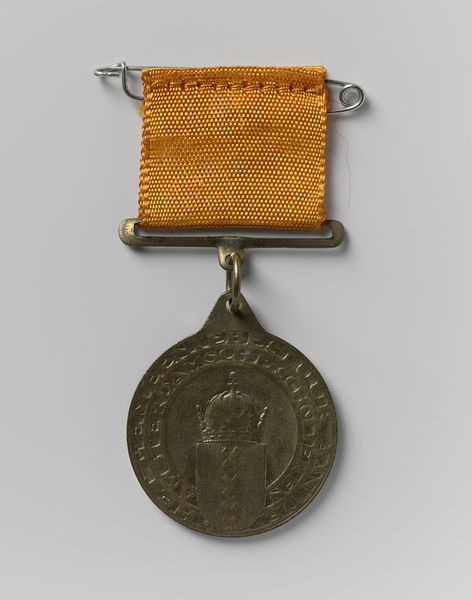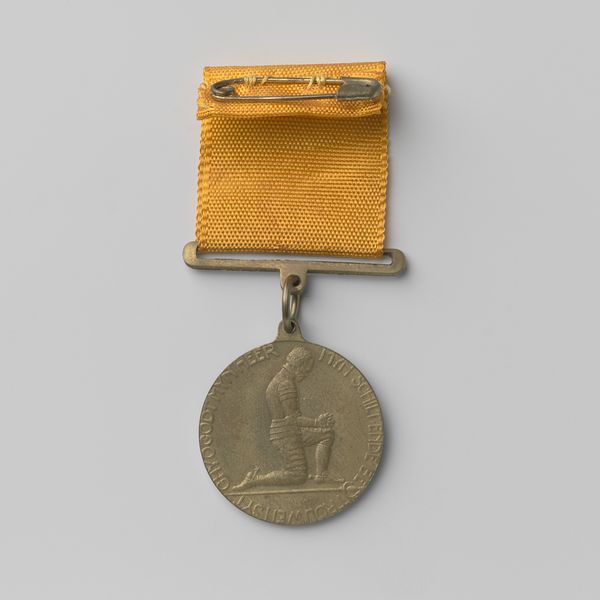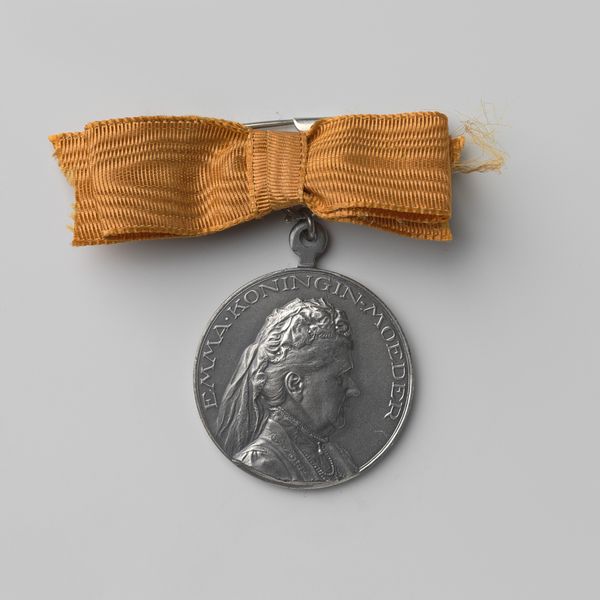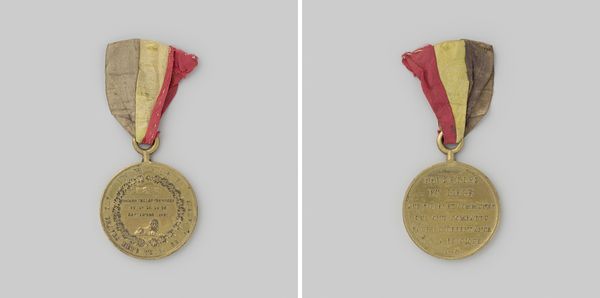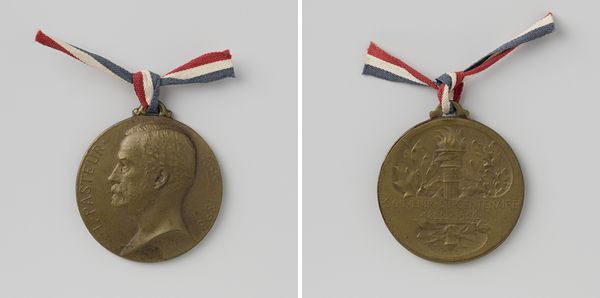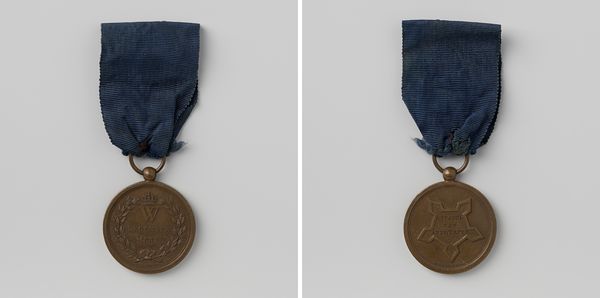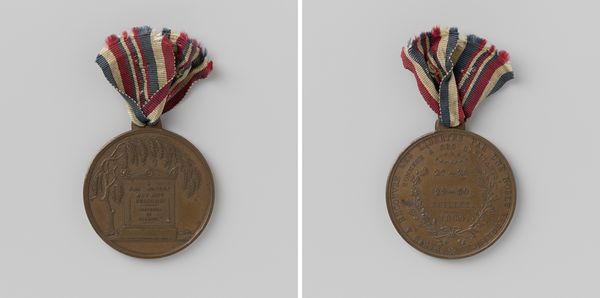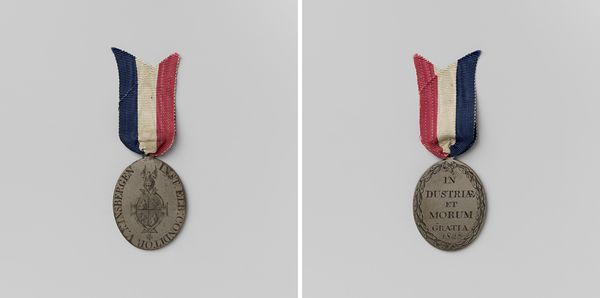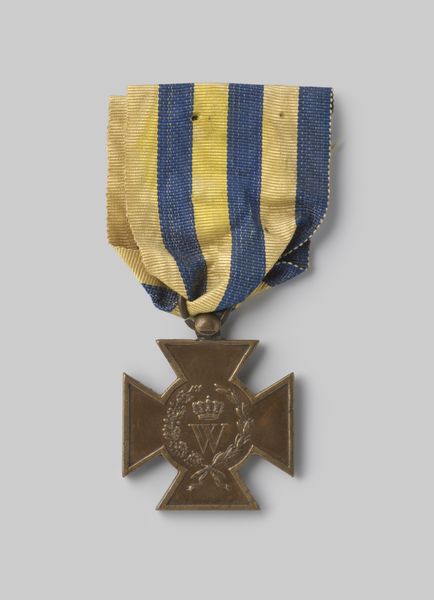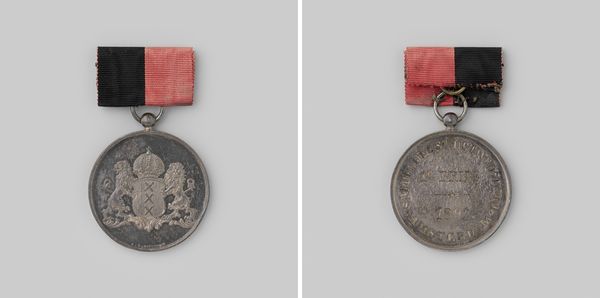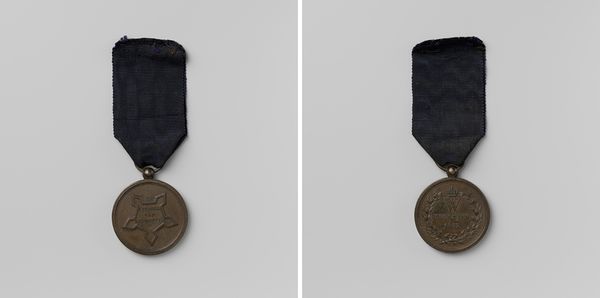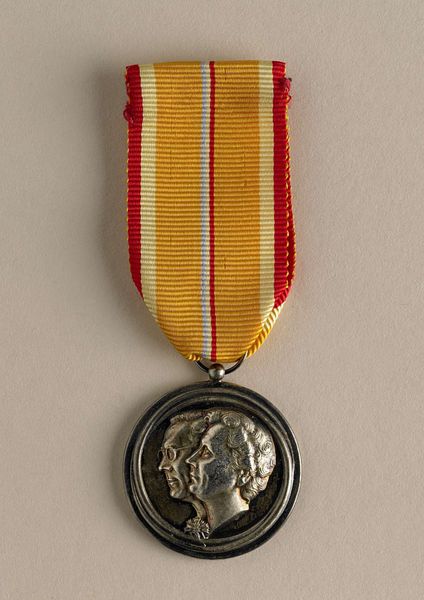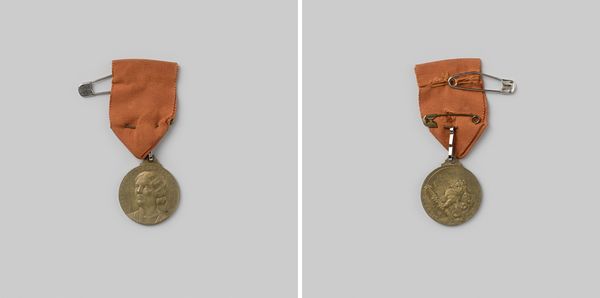
metal
#
portrait
#
metal
#
history-painting
Dimensions: diameter 2.8 cm, height 3.3 cm, height 6.6 cm, weight 11.90 gr
Copyright: Rijks Museum: Open Domain
Curator: This is a medal commemorating the birth of Princess Beatrix of the Netherlands in 1938, designed by Eduard Hüttl. It’s made of metal. Editor: My first impression is that this medal conveys both regality and vulnerability. The fine detailing in metal makes it impressive. Curator: Indeed. Medals like this served to propagate the image of the monarchy. They were a tangible way for the public to connect with and celebrate royal events, shaping public perception and solidifying the monarchy’s role. Editor: Absolutely. Considering its materiality, what metal was used signifies the relative prosperity or austerity of the time. Mass-produced medals, even in base metals, put royal imagery into the hands of everyday people in a new way. Was it common to mark births this way? Curator: Yes, commemorative medals had a long tradition. Think of them as early forms of mass media. The iconography is interesting: The princess being presented feels almost religious, lending a symbolic weight to her birth. Editor: And think of the labor involved, not just in design, but in the minting process, the creation of dies, and the distribution. These details are easy to overlook, but speak to the wide web of manufacture surrounding even a single object like this. Curator: Certainly. By the date on it, it makes you wonder how this type of token became a symbol, perhaps, of stability as war approached and how national identity was emphasized. Editor: Yes, and the very act of striking and owning such a medal connects the owner to both a broader patriotic project, and to the artistry and industrial infrastructure capable of creating such objects. Curator: When viewed today, it can also teach us a great deal about the priorities and values of its moment, the emphasis of dynastic succession and ideas about national identity during that era. Editor: And prompts reflection on our own modes of commemorating births today – our images shared, tagged, and collected quite differently. Curator: It offers a fascinating window into a specific intersection of power, propaganda, and public sentiment. Editor: I’m struck by what it represents as a physical record. The skill in crafting this diminutive object and the volume made and handled—traces of the past now available in our present.
Comments
No comments
Be the first to comment and join the conversation on the ultimate creative platform.
